-
 Bitcoin
Bitcoin $105,689.2025
0.66% -
 Ethereum
Ethereum $2,548.1724
0.79% -
 Tether USDt
Tether USDt $1.0002
-0.05% -
 XRP
XRP $2.1705
0.31% -
 BNB
BNB $647.5427
0.12% -
 Solana
Solana $151.7557
4.53% -
 USDC
USDC $1.0002
0.02% -
 Dogecoin
Dogecoin $0.1764
-0.53% -
 TRON
TRON $0.2723
0.99% -
 Cardano
Cardano $0.6328
0.34% -
 Hyperliquid
Hyperliquid $40.9357
0.17% -
 Sui
Sui $3.0008
0.47% -
 Bitcoin Cash
Bitcoin Cash $456.3962
5.41% -
 Chainlink
Chainlink $13.2523
1.20% -
 UNUS SED LEO
UNUS SED LEO $9.2018
1.55% -
 Avalanche
Avalanche $19.1782
0.81% -
 Stellar
Stellar $0.2594
0.37% -
 Toncoin
Toncoin $2.9692
0.57% -
 Shiba Inu
Shiba Inu $0.0...01207
-0.56% -
 Litecoin
Litecoin $86.3369
0.66% -
 Hedera
Hedera $0.1548
-1.94% -
 Polkadot
Polkadot $3.8193
1.04% -
 Ethena USDe
Ethena USDe $0.9999
-0.05% -
 Monero
Monero $318.5258
1.86% -
 Dai
Dai $0.9998
-0.01% -
 Bitget Token
Bitget Token $4.5219
-0.63% -
 Pepe
Pepe $0.0...01124
1.55% -
 Uniswap
Uniswap $7.2509
-0.25% -
 Pi
Pi $0.6044
-1.79% -
 Aave
Aave $275.5340
0.19%
What should I do if the DMA average line difference golden cross lags behind? How to improve the parameters to increase sensitivity?
Adjusting the DMA indicator's moving averages and using EMAs can reduce lag, helping traders catch golden crosses earlier in fast-moving crypto markets.
Jun 13, 2025 at 08:15 pm
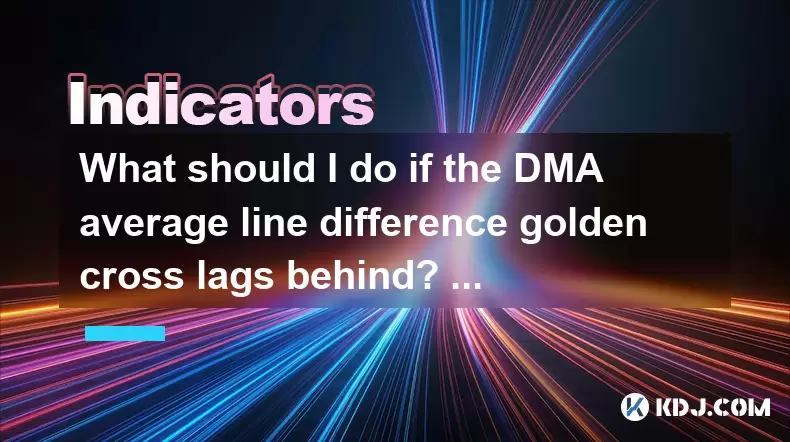
Understanding the DMA Indicator and Its Components
The DMA (Different of Moving Averages) indicator is a technical analysis tool commonly used in cryptocurrency trading to identify potential trend reversals. It calculates the difference between two moving averages, typically a short-term and a long-term one. When the DMA line crosses above the signal line — known as the golden cross — it signals a bullish trend. However, traders often encounter a problem where this golden cross lags behind price action, making it less effective for timely entries.
This delay occurs because moving averages are inherently lagging indicators. They rely on historical data, which means they respond slowly to sudden price changes. In volatile crypto markets, this can lead to missed opportunities or late entries that reduce profitability.
Why the Golden Cross Lags Behind in Crypto Trading
In fast-moving crypto markets, even a small delay in signal generation can result in significant losses or missed gains. The DMA golden cross lags behind primarily due to the smoothing effect of moving averages. Longer-period moving averages, such as those based on 20 or 50 periods, take more time to reflect recent price movements. As a result, the crossover may occur after the price has already moved substantially.
Additionally, market noise and volatility in cryptocurrencies like Bitcoin or Ethereum can cause false signals or delayed responses from the DMA. This makes it crucial to adjust the parameters of the DMA to make it more responsive without sacrificing its reliability.
Adjusting the Short-Term and Long-Term Moving Averages
To improve the sensitivity of the DMA indicator, you can modify the default settings of the moving averages used in its calculation. Most platforms use a standard setting like 10-day and 50-day moving averages. However, reducing these values can help the DMA respond faster to price changes.
- Reduce the short-term moving average period: Try changing it from 10 to 5 or 7.
- Reduce the long-term moving average period: Adjust it from 50 to 20 or 30.
By using shorter periods, the DMA becomes more sensitive to recent price movements. This allows the golden cross to appear earlier, giving traders a better chance to enter trades at favorable levels.
However, caution is necessary when lowering these values too much. Excessive sensitivity can lead to false signals and whipsaws, especially in highly volatile markets. Therefore, finding a balance between responsiveness and accuracy is key.
Incorporating Weighted or Exponential Moving Averages
Another way to increase the DMA's sensitivity is by switching from simple moving averages (SMA) to weighted moving averages (WMA) or exponential moving averages (EMA). These types of moving averages give more weight to recent prices, which helps reduce lag.
- Exponential Moving Average (EMA): Reacts more quickly to recent price changes compared to SMA.
- Weighted Moving Average (WMA): Assigns decreasing weights to older prices, emphasizing newer data points.
Using EMA or WMA in your DMA settings will make the golden cross appear sooner, aligning it more closely with actual price action. Many charting platforms allow users to customize the type of moving average used in the DMA calculation.
It’s important to test different combinations of moving average types and lengths using historical data before applying them in live trading scenarios.
Smoothing the Signal Line for Better Accuracy
The DMA also includes a signal line, which is usually a moving average of the DMA line itself. If the signal line is based on a long period (e.g., 10), it may not react quickly enough to changes in the DMA line, delaying the golden cross.
To address this, consider:
- Reducing the signal line period: Change it from 10 to 5 or 7.
- Using an EMA instead of an SMA for the signal line to enhance responsiveness.
These adjustments ensure that the DMA line and signal line converge more quickly, allowing the golden cross to form earlier and provide timelier trade signals.
Again, backtesting is essential to determine whether these modifications work well with your trading strategy and the specific cryptocurrency pair you're analyzing.
Backtesting and Fine-Tuning Your DMA Settings
Before implementing any parameter changes in live trading, conduct thorough backtesting to evaluate how well the modified DMA performs under various market conditions. Use historical price charts of major cryptocurrencies like BTC, ETH, or altcoins to simulate trades based on the adjusted DMA signals.
During backtesting:
- Compare the performance of the original DMA with the modified version.
- Track how early the golden cross appears with the new settings.
- Assess the frequency of false signals and whether they increase with higher sensitivity.
You can use platforms like TradingView, Binance, or MetaTrader for this purpose. Adjust the DMA parameters iteratively until you find a setup that improves responsiveness while maintaining signal quality.
Remember, no single set of parameters works best for all cryptocurrencies or market conditions. You may need to customize the DMA settings for each asset or timeframe you trade.
Frequently Asked Questions
Q: Can I use DMA on all timeframes effectively?
Yes, the DMA can be applied across multiple timeframes. However, shorter timeframes like 15-minute or 1-hour charts may benefit more from increased sensitivity due to their inherent volatility. Always test the settings on the specific timeframe you plan to trade.
Q: Does increasing DMA sensitivity affect other signals like death crosses?
Yes, adjusting parameters to increase sensitivity affects both golden crosses and death crosses. While it leads to earlier entry signals, it can also generate more false signals during sideways or choppy market conditions.
Q: Are there alternative indicators that work better than DMA in crypto markets?
Some traders prefer using the MACD (Moving Average Convergence Divergence) or Triple EMA Crossover strategies in place of or alongside DMA. These alternatives might offer improved responsiveness depending on your trading style and goals.
Q: How do I know if my DMA settings are over-optimized?
If your DMA settings perform exceptionally well in backtests but fail in live trading, they may be over-optimized. Overfitting to past data reduces adaptability to real-time market dynamics. Always validate results across multiple assets and timeframes.
Disclaimer:info@kdj.com
The information provided is not trading advice. kdj.com does not assume any responsibility for any investments made based on the information provided in this article. Cryptocurrencies are highly volatile and it is highly recommended that you invest with caution after thorough research!
If you believe that the content used on this website infringes your copyright, please contact us immediately (info@kdj.com) and we will delete it promptly.
- SecondSwap Expands to Avalanche (AVAX) Blockchain Targeting Locked and Vesting Digital Assets
- 2025-06-15 23:35:12
- With the start of Season 8, a Luckier Coin has been discovered alongside the Ring of Jinx. The secret hunting continues!
- 2025-06-15 23:35:12
- Remove Taxes on Crypto Profits
- 2025-06-15 23:30:12
- Crypto Markets Brace for Impact Ahead of Key U.S. Inflation Data
- 2025-06-15 23:30:12
- CBOE Global Markets Launches New Bitcoin Futures Contracts Called Cboe FTSE Bitcoin Index Futures (XBTF)
- 2025-06-15 23:25:12
- El Salvador Has Continued to Buy Bitcoin (BTC) Despite Striking a Deal with the IMF
- 2025-06-15 23:25:12
Related knowledge
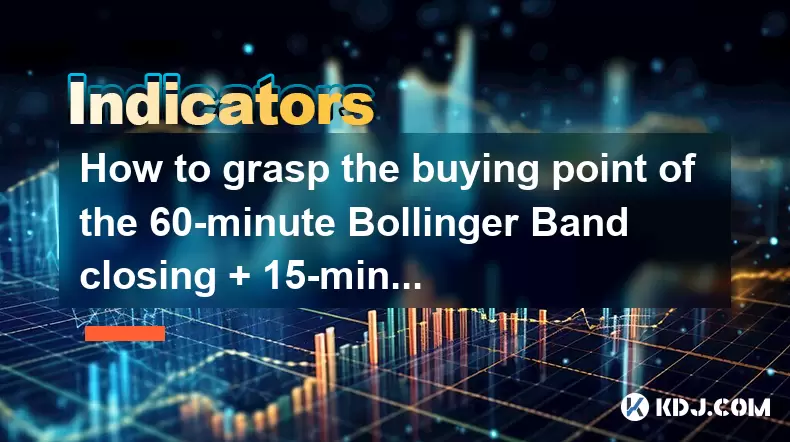
How to grasp the buying point of the 60-minute Bollinger Band closing + 15-minute MACD bottom divergence?
Jun 16,2025 at 12:03am
Understanding the Bollinger Band Closing Signal on a 60-Minute ChartThe Bollinger Band closing signal refers to a situation where the price closes outside the upper or lower band and then re-enters it in the subsequent candlestick. In this context, we focus on the lower Bollinger Band closing, which indicates a potential reversal from a downtrend. On th...
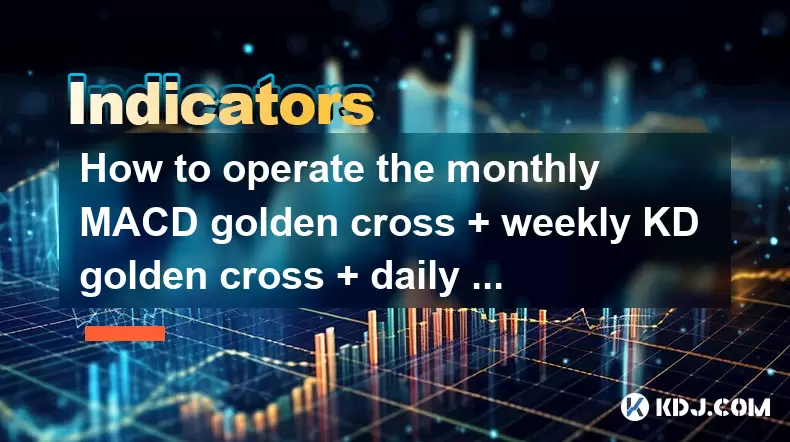
How to operate the monthly MACD golden cross + weekly KD golden cross + daily volume breakthrough?
Jun 15,2025 at 05:36am
Understanding the Strategy: Monthly MACD Golden CrossTo effectively operate the monthly MACD golden cross, traders must first understand what this signal entails. The MACD (Moving Average Convergence Divergence) golden cross occurs when the MACD line crosses above the signal line on a given chart timeframe. When this happens on the monthly chart, it sug...
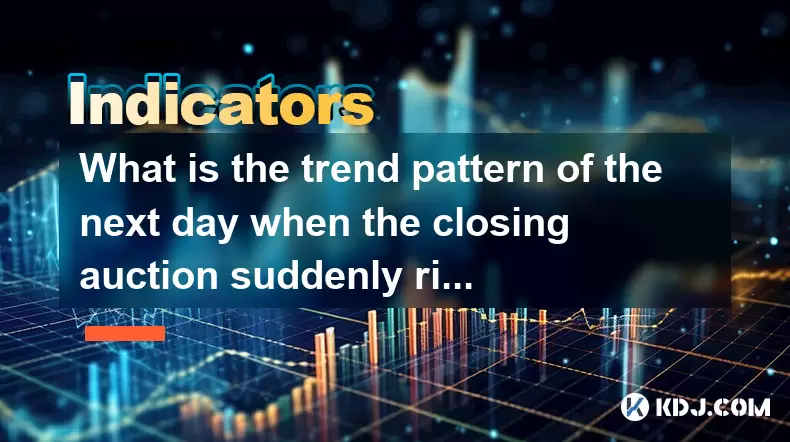
What is the trend pattern of the next day when the closing auction suddenly rises?
Jun 15,2025 at 08:15am
Understanding Closing Auctions in Cryptocurrency MarketsIn the context of cryptocurrency trading, a closing auction refers to a mechanism used by exchanges to determine the closing price of an asset at the end of a trading session. This process typically occurs within a short time window before the market closes for the day and aims to provide a fair an...

What does it mean when the volume fluctuates during the sideways trading at high levels?
Jun 15,2025 at 10:28am
Understanding Volume Fluctuations in Sideways TradingWhen volume fluctuates during sideways trading at high levels, it refers to the changes in the number of assets traded over a given period while the price remains relatively stable, moving within a defined range. This phenomenon typically occurs when the market lacks a clear directional bias—neither b...
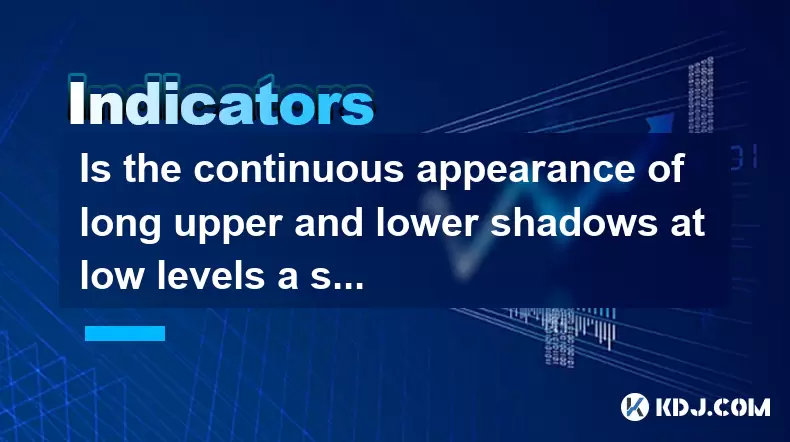
Is the continuous appearance of long upper and lower shadows at low levels a signal of accumulation?
Jun 15,2025 at 01:43am
Understanding Long Upper and Lower Shadows in Candlestick ChartsIn the world of cryptocurrency trading, candlestick patterns are widely used to analyze price movements. A long upper shadow, also known as a wick or tail, indicates that the price rose significantly during the period but was pushed back down by selling pressure. Conversely, a long lower sh...
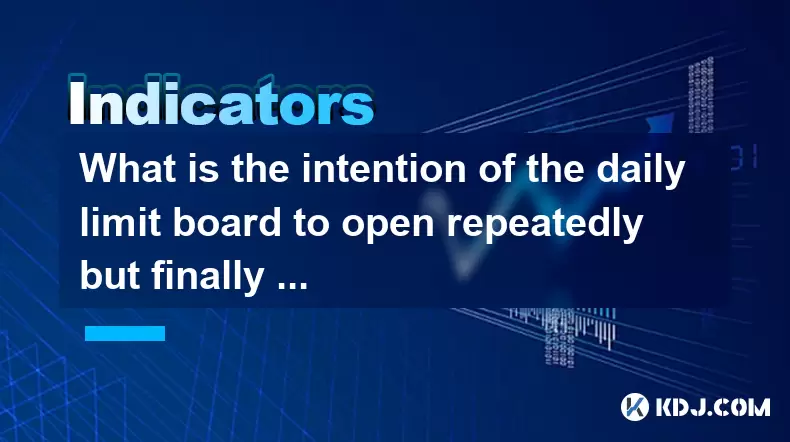
What is the intention of the daily limit board to open repeatedly but finally close?
Jun 15,2025 at 01:08am
Understanding the Daily Limit Board in Cryptocurrency TradingIn cryptocurrency trading, a daily limit board refers to a price movement restriction mechanism applied by certain exchanges or regulatory bodies. This mechanism is primarily used to prevent extreme volatility and panic selling or buying during periods of intense market fluctuation. When an as...

How to grasp the buying point of the 60-minute Bollinger Band closing + 15-minute MACD bottom divergence?
Jun 16,2025 at 12:03am
Understanding the Bollinger Band Closing Signal on a 60-Minute ChartThe Bollinger Band closing signal refers to a situation where the price closes outside the upper or lower band and then re-enters it in the subsequent candlestick. In this context, we focus on the lower Bollinger Band closing, which indicates a potential reversal from a downtrend. On th...

How to operate the monthly MACD golden cross + weekly KD golden cross + daily volume breakthrough?
Jun 15,2025 at 05:36am
Understanding the Strategy: Monthly MACD Golden CrossTo effectively operate the monthly MACD golden cross, traders must first understand what this signal entails. The MACD (Moving Average Convergence Divergence) golden cross occurs when the MACD line crosses above the signal line on a given chart timeframe. When this happens on the monthly chart, it sug...

What is the trend pattern of the next day when the closing auction suddenly rises?
Jun 15,2025 at 08:15am
Understanding Closing Auctions in Cryptocurrency MarketsIn the context of cryptocurrency trading, a closing auction refers to a mechanism used by exchanges to determine the closing price of an asset at the end of a trading session. This process typically occurs within a short time window before the market closes for the day and aims to provide a fair an...

What does it mean when the volume fluctuates during the sideways trading at high levels?
Jun 15,2025 at 10:28am
Understanding Volume Fluctuations in Sideways TradingWhen volume fluctuates during sideways trading at high levels, it refers to the changes in the number of assets traded over a given period while the price remains relatively stable, moving within a defined range. This phenomenon typically occurs when the market lacks a clear directional bias—neither b...

Is the continuous appearance of long upper and lower shadows at low levels a signal of accumulation?
Jun 15,2025 at 01:43am
Understanding Long Upper and Lower Shadows in Candlestick ChartsIn the world of cryptocurrency trading, candlestick patterns are widely used to analyze price movements. A long upper shadow, also known as a wick or tail, indicates that the price rose significantly during the period but was pushed back down by selling pressure. Conversely, a long lower sh...

What is the intention of the daily limit board to open repeatedly but finally close?
Jun 15,2025 at 01:08am
Understanding the Daily Limit Board in Cryptocurrency TradingIn cryptocurrency trading, a daily limit board refers to a price movement restriction mechanism applied by certain exchanges or regulatory bodies. This mechanism is primarily used to prevent extreme volatility and panic selling or buying during periods of intense market fluctuation. When an as...
See all articles

























































































